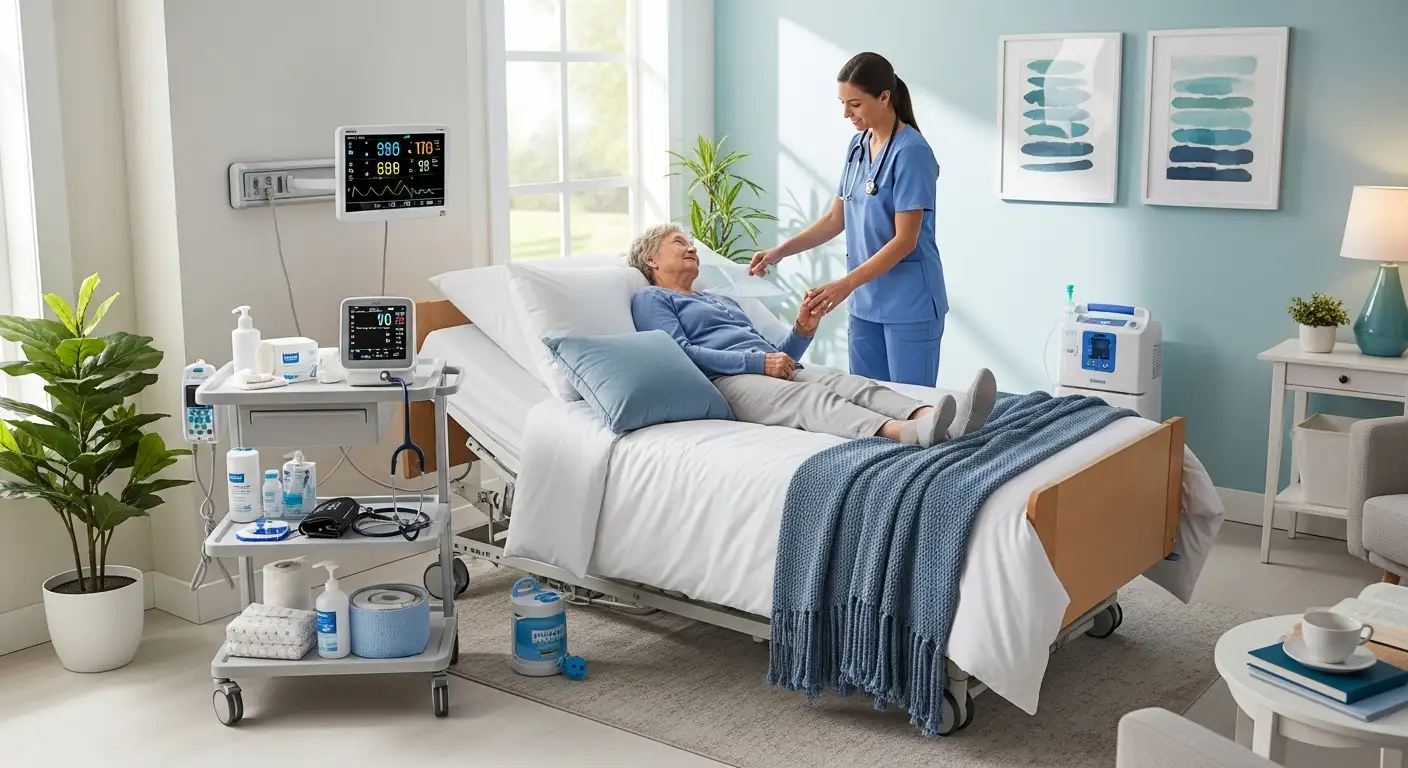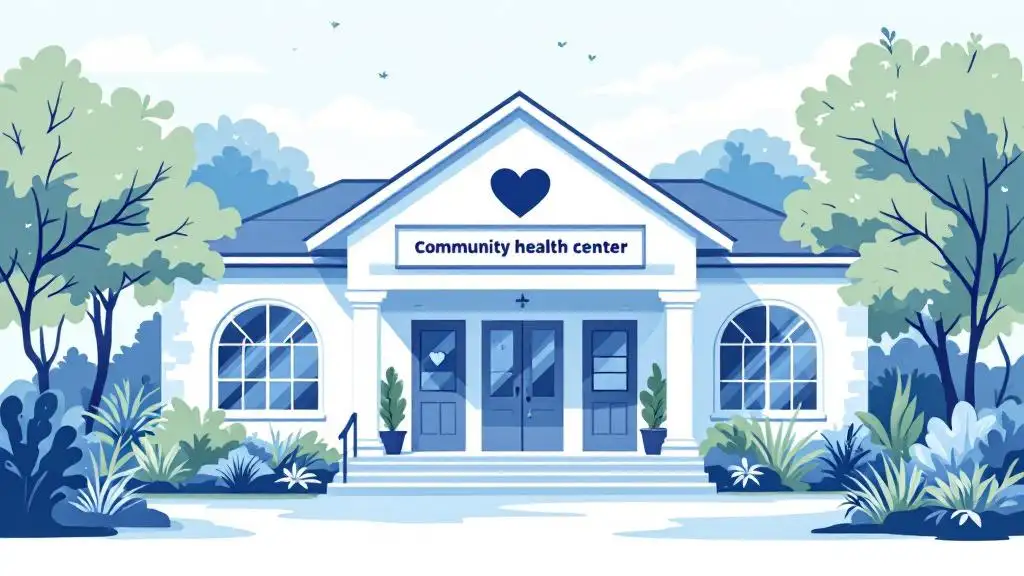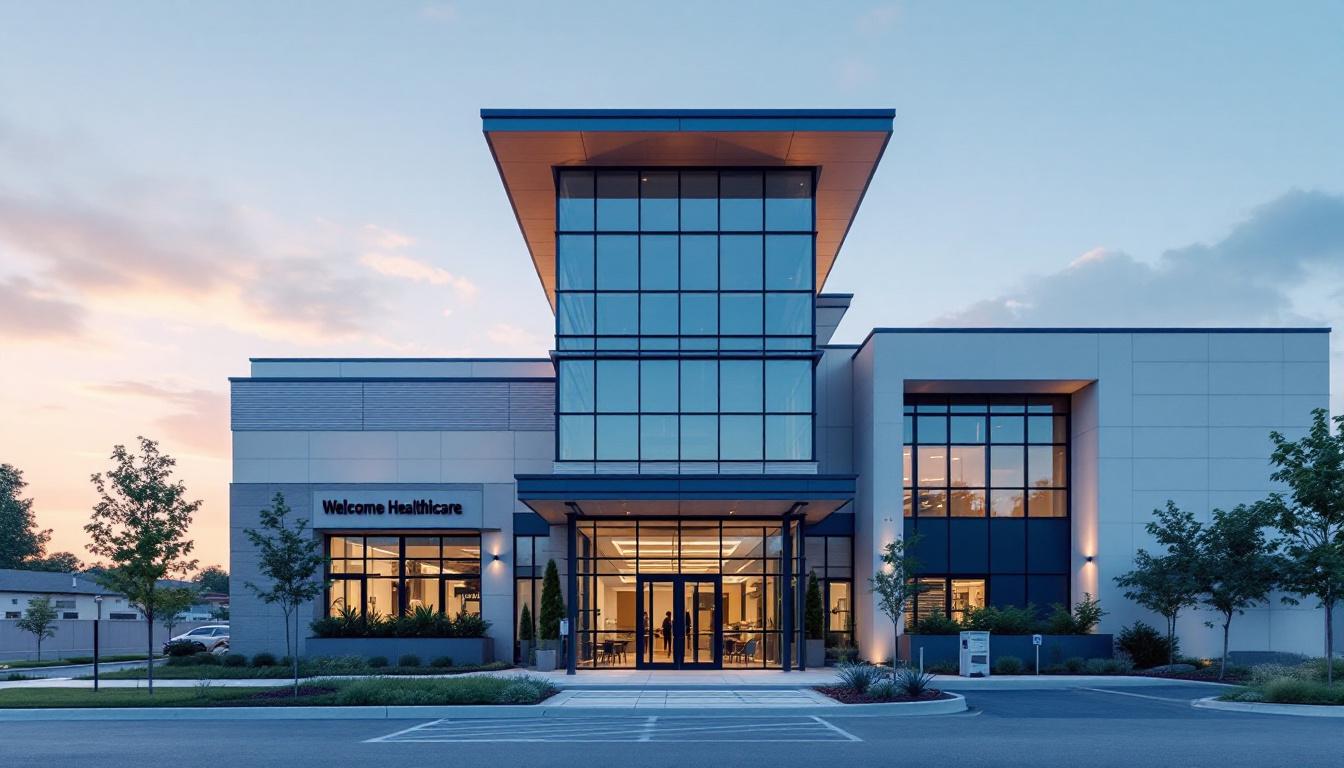The Benefits of Community-Based Services for NHTD Participants
Empowering Independence Through Community-Based Support

Understanding the Impact of Community Services on NHTD Participants
Community-based services are transforming lives for individuals participating in the NHTD Waiver, a crucial program designed to support independence and community living among seniors and individuals with disabilities. By offering a comprehensive range of supports tailored to individual needs, these services promote dignity, autonomy, and better quality of life, reducing reliance on institutional care and fostering a sense of belonging. This article explores how community-based programs like the NHTD Waiver serve as vital alternatives to nursing home placement, empowering participants to live fulfilling, independent lives within their communities.
Core Features and Eligibility Criteria of Community-Based Programs for NHTD Participants
What services, eligibility criteria, and features are common in community-based programs for NHTD participants?
Community-based programs designed for NHTD (Nursing Home Transition and Diversion) participants offer a wide array of services that support adults in maintaining their independence within their communities. These services include personal supports such as assistance with daily activities, medical care like physical, occupational, and speech therapies, and behavioral supports. Participants can also benefit from environmental modifications, including home and vehicle modifications, to enhance safety and accessibility.
Social services are integral to the program, such as community integration counseling, peer mentoring, and respite care, which help individuals connect with their communities, reduce caregiver burden, and promote well-being. Meal services, including home-delivered and congregate meals, further support nutritional needs.
Eligibility criteria are strictly outlined to ensure services reach those who truly need them. Participants generally must be enrolled in Medicaid, require a nursing facility level of care, and be residents of New York State, specifically in designated counties like Allegany, Broome, Chemung, Chenango, Schuyler, Steuben, and Tioga. They should be aged 18-64 with a disability or seniors aged 65 and older who are at risk of institutionalization. Financial eligibility is also required, with income limits of $1,800/month for individuals and $2,433/month for couples, and asset limits of $32,396 for individuals and $43,781 for couples.
Features of these programs emphasize person-centered assessment, where professionals evaluate individuals' needs and preferences. This leads to personalized care plans that adapt over time to meet the evolving needs of participants. These plans are developed collaboratively with service coordinators and providers, ensuring that services are tailored and goals are aligned with individual desires for independence, health, and community engagement.
Furthermore, community-based programs are typically funded through Medicaid waivers such as the 1915(c) authority, allowing states to waive certain Medicaid requirements for providing home and community-based services. While they generally promote extensive support options, they often do not include participant-directed provider selection or placement in adult foster care homes.
The overarching aim of these programs is to create a comprehensive, person-centered approach that prevents unnecessary nursing home placements, promotes active community living, and enhances quality of life.
| Service Type | Description | Notable Features |
|---|---|---|
| Personal Supports | Assistance with activities of daily living | Tailored to individual needs |
| Medical Care | Therapy services, behavioral health support | Designed to maintain health |
| Home Modifications | Environmental adaptations for safety | Customized for accessibility |
| Social Services | Counseling, peer mentoring, community integration | Focused on social wellbeing |
| Nutritional Support | Meal services including home delivery | Ensures nutritional health |
| Transportation | Assistance with mobility needs | Promotes community participation |
Eligible individuals benefit from a broad spectrum of services that empower them to live independently, foster community connections, and maintain their health and well-being. The focus on person-centered, flexible planning ensures that each participant’s unique needs and goals are at the forefront of care delivery.
Key Benefits of Community Support in Promoting Independence and Community Living
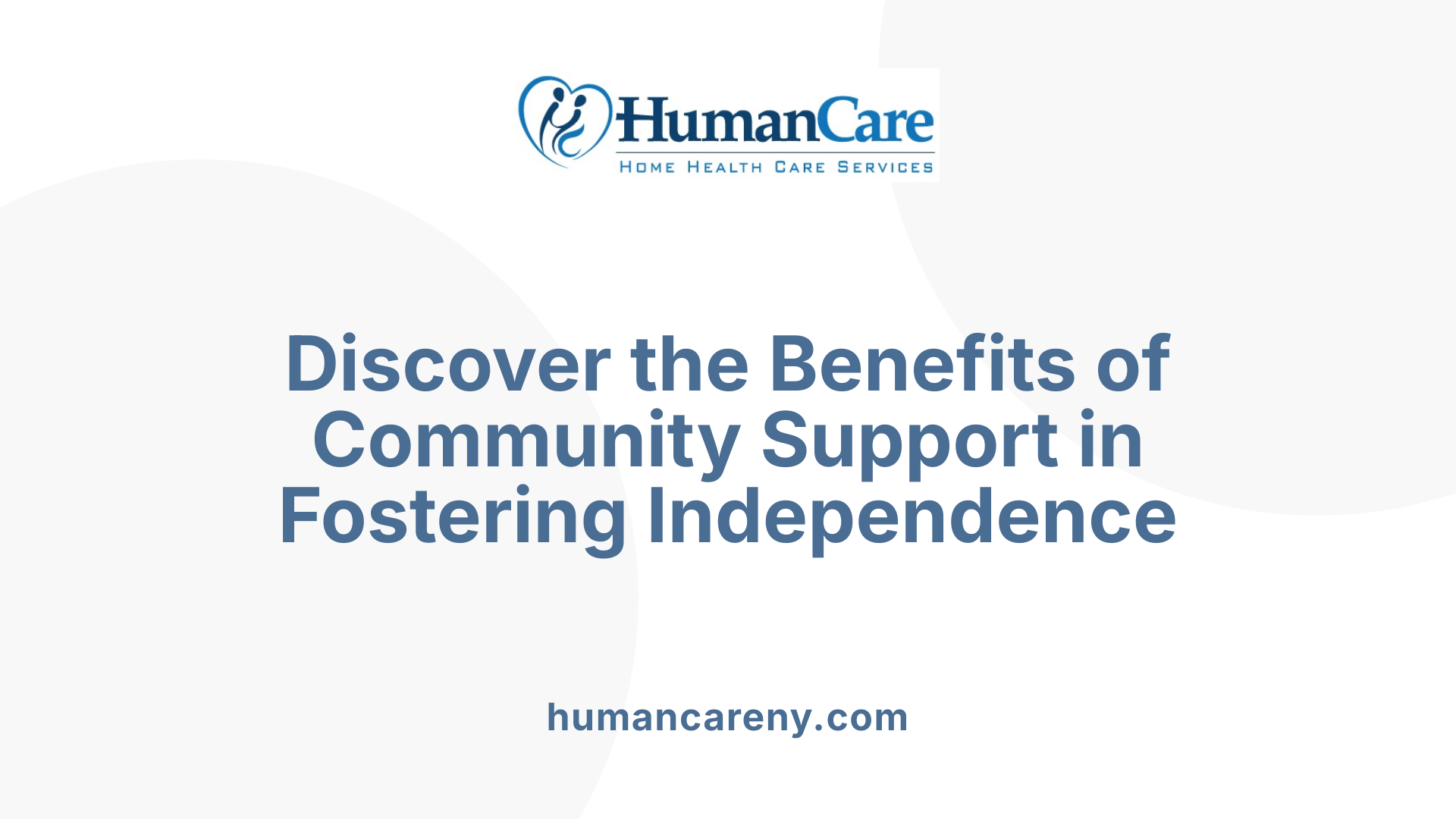
What are the advantages and support provided by community-based programs like the NHTD Waiver for participants?
Community programs such as the NHTD Waiver play a vital role in enabling older adults and individuals with disabilities to live more independently within their communities. These programs deliver a broad array of services tailored to each individual’s unique needs, strengths, and preferences.
Participants benefit from personalized supports that include assistance with daily activities, medical care, social engagement, and environmental modifications. For example, services like personal care support individuals with daily hygiene and mobility needs, while home modifications — such as installing grab bars or ramps — improve safety and accessibility. Medical assistance may involve physical, occupational, and speech therapy, ensuring health needs are addressed in the least restrictive environment.
Case management and service coordination help participants develop detailed Service Plans that align with their goals of independence. This planning process involves assessment, customization of services, and regular reviews to adapt to changing needs. Additionally, these programs often offer respite care for caregivers and support for community integration activities, promoting social connections and reducing feelings of isolation.
How do community programs promote independence and reduce reliance on institutional care?
By providing the necessary supports and services in a community setting, NHTD Waiver and similar programs foster greater independence. Participants can manage their daily lives more effectively, maintain their routines, and enjoy social interactions. This empowerment helps reduce the necessity for nursing home placement or assisted living facilities.
Services such as assistive technology, home and vehicle modifications, and health monitoring allow individuals to live safely and comfortably at home. Community transitional services—including help with securing housing subsidies, utilities, and furnishings—facilitate a smooth transition back into community living after hospital stays or hospitalization.
Furthermore, programs emphasize a person-centered approach where participants make choices about their services. This control over their care fosters autonomy and dignity, crucial elements in enhancing quality of life.
Facilitation of social connections, skill development, and community integration
Community-based support fosters social engagement by encouraging participation in structured day programs, peer mentoring, and community activities. This connection to others improves emotional well-being and reduces social isolation.
Skills development is another cornerstone, with services like independent living skills training helping participants manage daily tasks more effectively. These programs support the development of life skills necessary for maintaining independence and participating fully in community life.
The balance of health, social, and environmental services not only supports individual needs but also promotes a sense of belonging and inclusion within the community. As a result, participants can enjoy meaningful lives with dignity and self-reliance.
| Service Type | Description | Benefits |
|---|---|---|
| Personal Care | Assistance with hygiene, grooming, and mobility | Promotes daily independence |
| Home Modifications | Ramps, grab bars, door alterations | Enhances safety and accessibility |
| Medical Assistance | Therapy, health monitoring, behavioral support | Maintains health and well-being |
| Social Engagement | Peer mentoring, community activities | Reduces isolation and fosters belonging |
| Skill Development | Living skills training | Supports self-reliance and autonomy |
| Environmental Support | Respite, transportation, meals | Improves quality of life and convenience |
This comprehensive approach ensures that participants not only receive essential health services but also gain the ability to live fulfilling, community-integrated lives.
Supporting Community Living and Reducing Institutionalization
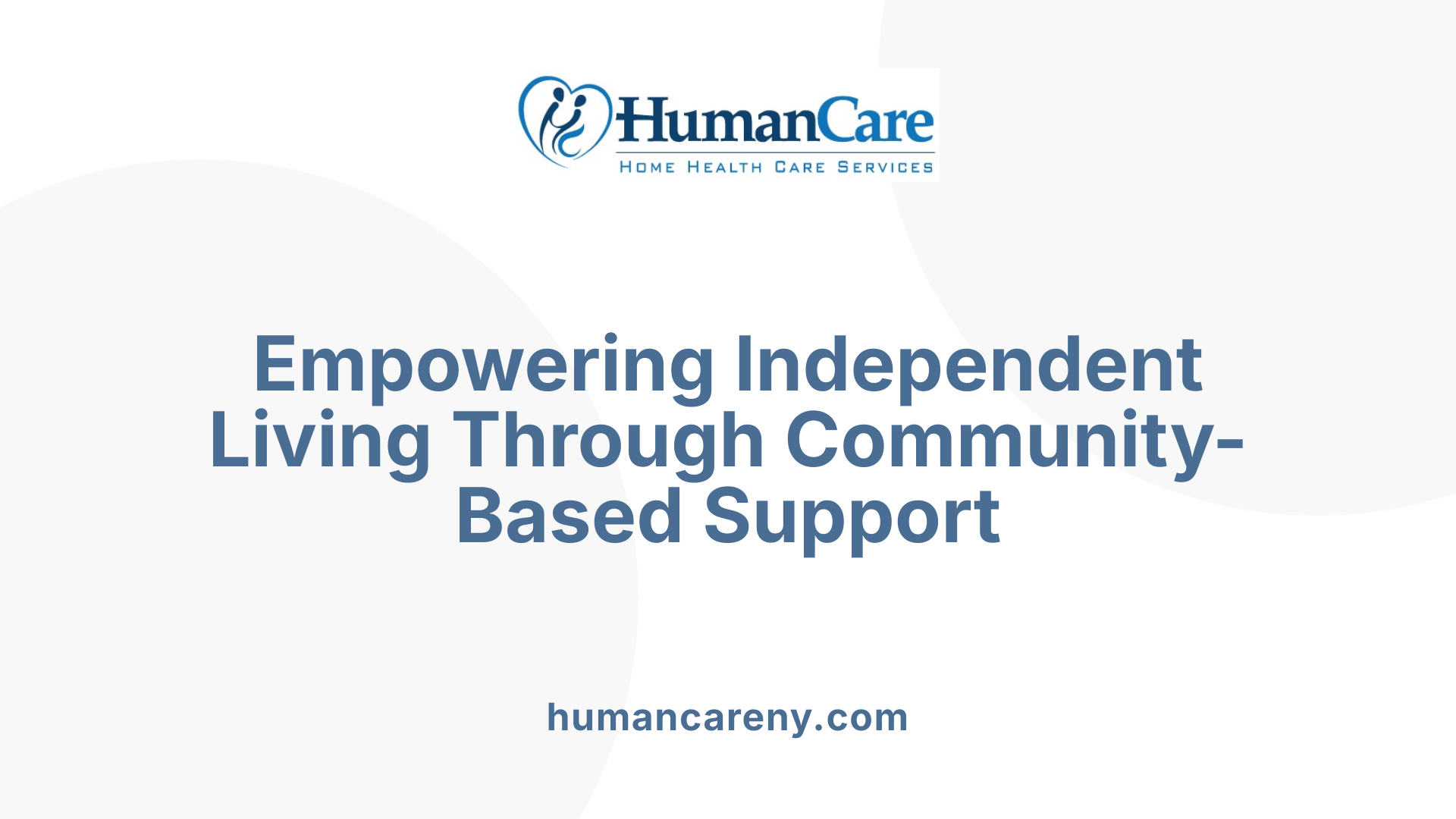
What are the benefits of community-based services for NHTD participants in supporting community living and independence?
Community-based services play a vital role in helping NHTD participants live independently within their communities. These services are personalized and continuous, tailored to meet individual needs around health, daily activities, and social engagement. By providing support like assistance with daily living, mental health counseling, and assistive technology, participants are empowered to maintain their independence and improve their overall quality of life.
Such services help prevent unnecessary stays in hospitals or nursing homes by promoting early intervention and facilitating smooth transitions back to the community. They also enable individuals to develop essential daily living skills, foster social connections, and stay active in their communities.
Another important benefit is creating accessible and barrier-free environments. Home modifications and inclusive programs help participants navigate their surroundings safely and comfortably, supporting their autonomy. Additionally, community integration activities reduce feelings of isolation and promote social bonding.
Overall, community-based services contribute to holistic health, social inclusion, and personal growth. They help participants maintain their independence, improve well-being, and live fulfilling lives within the community setting.
How does the NHTD Waiver support community living?
The NHTD Waiver provides a wide variety of services directly aimed at maintaining and enhancing community living. These include structured day programs, personal care, assistive technology, environmental modifications, and transportation, among others.
Participants are encouraged to develop personalized Service Plans, which align services with their individual goals and needs. Service coordination ensures that each person receives appropriate support, with regular reviews to adjust plans as necessary.
By focusing on prevention and early intervention, the program delays or prevents institutionalization. It also supports transitions from hospital to home by offering transitional services such as help with security deposits, utility setup, and furnishings.
The program emphasizes self-reliance by allowing participants to choose their providers and desired outcomes, promoting independence and dignity.
What role do social networks, policies, and crisis support play in community living?
A strong social network—family, friends, community organizations—is crucial for supporting independence and well-being. The NHTD program recognizes this and encourages participants to maintain and strengthen these connections.
Policy frameworks, such as the Medicaid 1915(c) waiver, enable flexible and comprehensive services that adapt to individual needs. These policies support the delivery of community-based care, allowing for personalized and responsive services.
Crisis support services, including behavioral interventions and respite care, are essential for managing emergencies or stressors that could otherwise lead to hospitalization or institutionalization. They provide stability, reassurance, and immediate assistance when needed.
Through a combination of tailored services, community engagement, supportive policies, and crisis management, the NHTD Waiver actively promotes community living, independence, and a better quality of life for its participants.
How Community Services Prevent Institutionalization and Support Reentry into the Community
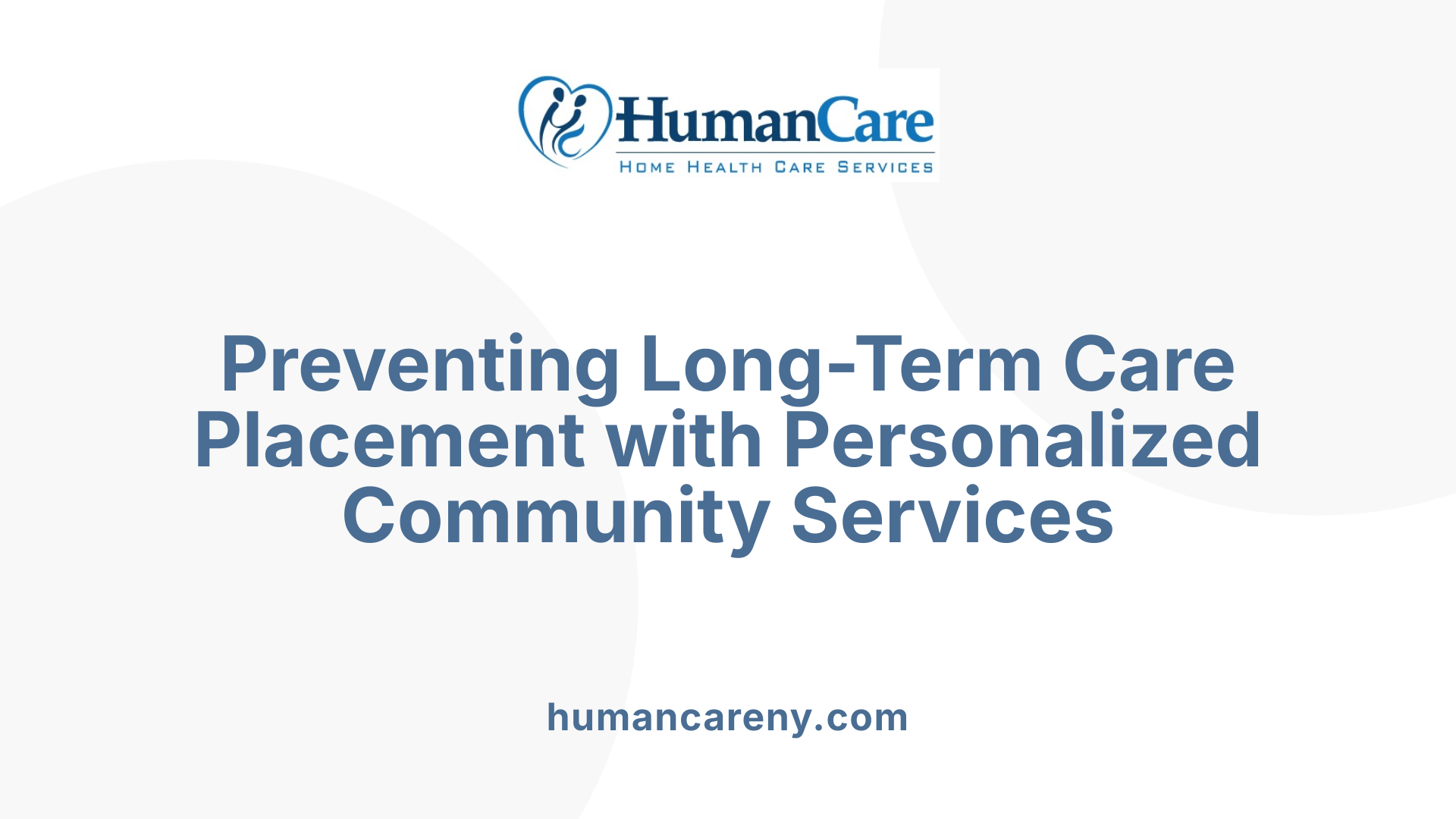
How do community-based services help NHTD participants avoid institutionalization and transition back into the community?
Community-based services are fundamental in helping participants of the NHTD Waiver program remain in or return to their homes instead of living in nursing facilities. These services are tailored to meet the individual needs of each participant, offering various supports such as home modifications, personal care assistance, and mental health services.
Home modifications, like installing ramps, grab bars, or accessible bathrooms, remove physical barriers and make homes safer and more livable for individuals with disabilities or aging seniors. Personal support services such as assistance with daily activities, medication management, and behavioral health care help maintain independence and quality of life.
Mental health services provide essential emotional and psychological support, helping individuals cope with stress, anxiety, or depression that might otherwise lead to institutionalization. By addressing both physical and mental health needs, community services create a comprehensive support system.
These services foster community integration by enabling individuals to participate actively in their neighborhoods and social networks. Community agencies, family members, and peer support groups collaborate to maintain social connections, combat loneliness, and uphold mental well-being.
Supportive policy approaches, such as developing small group homes or crisis intervention programs, contribute to a stable environment for those with limited family support. These models promote independence while ensuring necessary supervision and care, reducing the likelihood of unnecessary institutional stays.
Ultimately, community services empower individuals to live with dignity, independence, and social engagement. They align with legal and human rights principles that emphasize the importance of living in the least restrictive environment possible, respecting each person’s preferences and needs. By doing so, community services serve as a vital alternative to long-term inpatient care, making it possible for more people to enjoy a higher quality of life within their communities.
Supporting Sustainable, Safe, and Long-Term Community Living
Ensuring long-lasting, safe community living involves ongoing assessment and tailored service plans that adapt to changing needs. Regular reviews help refine support strategies, promote skill development, and prevent health deterioration.
Preventative measures like environmental modifications and assistive technologies further enhance safety and independence. These include devices that support mobility or communication, enabling individuals to manage daily routines more comfortably.
Social supports such as peer mentoring and behavioral interventions foster a sense of belonging and resilience. These services promote mental health stability and social participation, contributing to sustainable community living.
Further, policies that promote integrated healthcare, transportation access, and affordable housing are essential. They build an infrastructure that supports aging in place and accommodates diverse needs without resorting to institutional care.
Policy Approaches and Social Supports
Effective policies focus on creating a spectrum of services that prioritize individual choice, community safety, and cost-effective care. Investing in community infrastructure, caregiver training, and outreach efforts ensures that vulnerable populations are aware of and can access these services.
Social supports, including caregiver respite, community engagement programs, and social inclusion initiatives, bolster the resilience of individuals and their support networks. These programs reduce caregiver burden and promote social cohesion.
In summary, community services driven by thoughtful policies and collaborative efforts are vital to preventing unnecessary institutionalization. They support meaningful, safe, and sustainable home and community living by addressing physical, mental, and social needs, ultimately enhancing the well-being and autonomy of participants.
Enhancing Quality of Life Through Community-Based Services
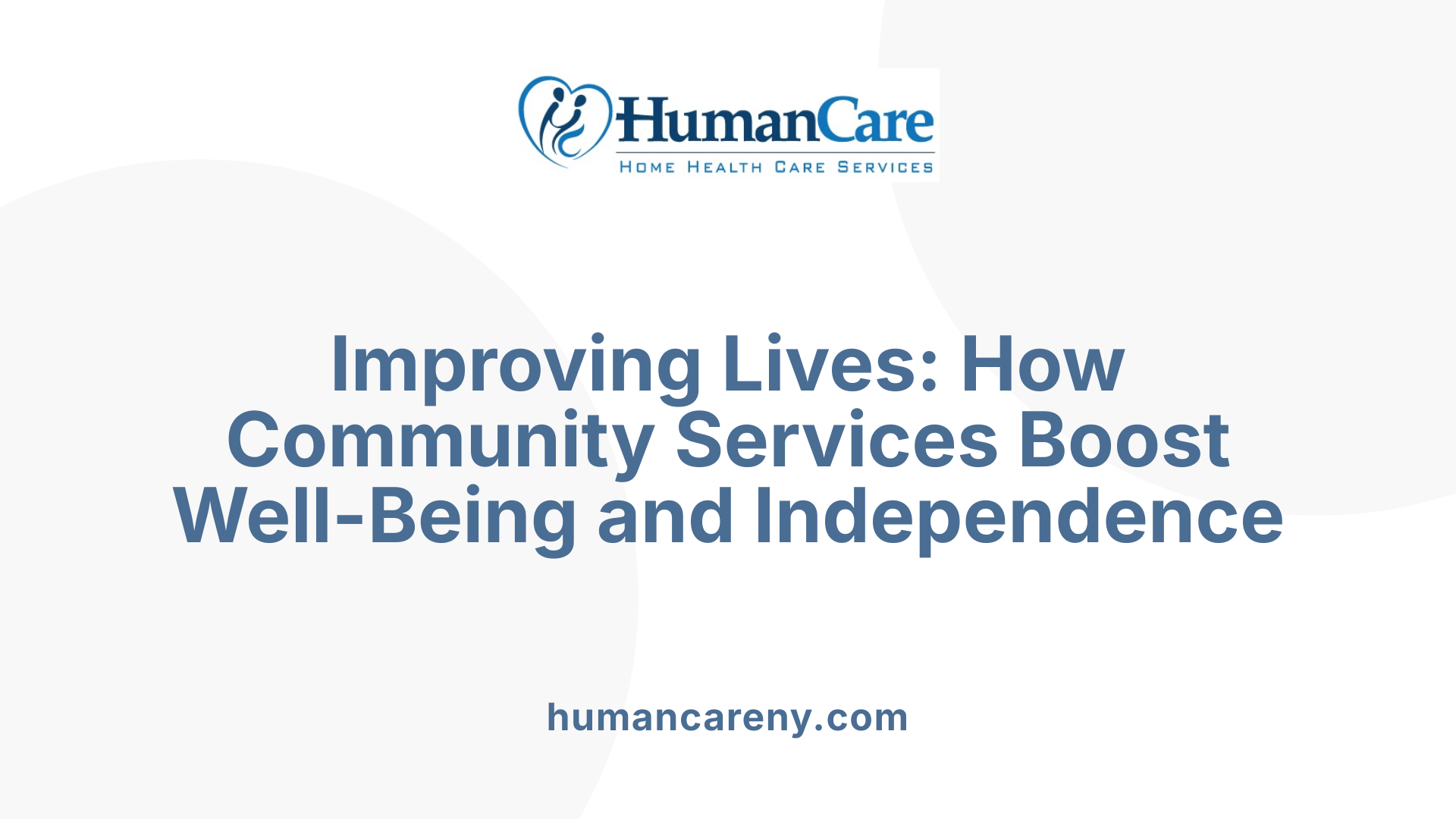
How do community-based services improve the quality of life for NHTD participants?
Community-based services offered through the NHTD Waiver program significantly enhance the lives of participants by addressing a broad spectrum of their needs. These services are designed to support participants in maintaining their health, safety, and emotional well-being while fostering independence.
The support extends to medical needs, including therapies such as physical, occupational, and speech therapies, which help maintain or improve functional abilities. Emotional and social needs are met through counseling, peer mentoring, behavioral supports, and community integration services that promote social participation and reduce feelings of isolation.
Participants receive assistance in transitioning back into their homes and communities, which promotes a sense of control over their lives. Services like assistive technology, home modifications, and personalized care plans enable individuals to navigate daily activities safely and effectively.
Studies demonstrate that when community supports like health education, psychological services, and social activities are accessible, NHTD participants report higher satisfaction and improved quality of life. These services also facilitate rehabilitation, reduce hospital readmissions, and promote community safety.
Moreover, engaging participants in community activities encourages civic participation, builds social networks, and fosters a sense of belonging. Overall, the comprehensive support provided under the NHTD program creates an environment conducive to well-being, independence, and social integration.
How do these services foster independence, safety, and social participation?
Fostering independence involves empowering participants with skills and resources that enable them to live in the community with minimal assistance. Personalized service plans, assistive technologies, and environmental modifications all contribute to greater autonomy.
Safety is prioritized through health monitoring, assistive devices, and home modifications that reduce risks associated with aging or disabilities. Respite care and caregiver support also ensure that participants remain safe within their community environments.
Encouraging social participation, the program offers structured day programs, community events, and peer mentoring, which foster connections and reduce social isolation. Transportation services further enhance access to community resources, appointments, and social activities.
Through these efforts, the NHTD Waiver program aims to create a balanced approach that emphasizes individual rights, personal growth, and active community engagement, ultimately leading to a better quality of life for its participants.
| Service Type | Purpose | Additional Details |
|---|---|---|
| Medical therapies | Improve physical and communicative functions | Includes physical, occupational, and speech therapies |
| Support services | Assist daily living activities | Home health aid, personal care, respite care |
| Environmental modifications | Ensure safety and accessibility | Home and vehicle modifications |
| Social and community programs | Enhance social participation and emotional well-being | Peer mentoring, community activities, counseling |
| Transition services | Facilitate smooth community reintegration | Moving assistance, utility setup, security deposits |
This array of services ensures that participants receive tailored support addressing holistic needs, supporting their pursuit of an independent and fulfilling life in the community.
The Role of Participant-Centered Planning in Ensuring Effective Community Support
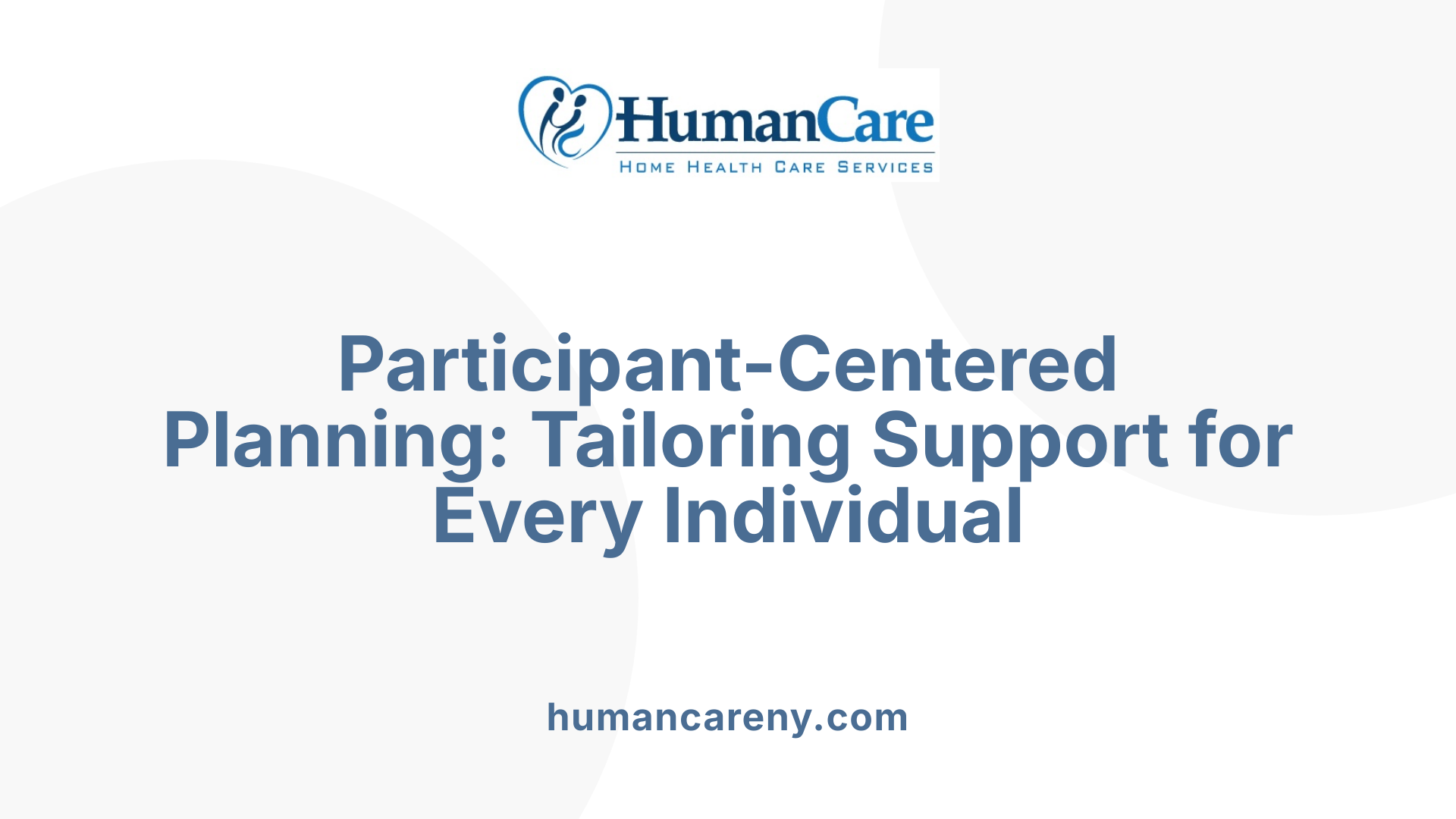
How are personalized service plans developed for NHTD participants?
Creating tailored service plans is a fundamental aspect of supporting NHTD participants in the community. The process begins with a comprehensive assessment conducted by qualified professionals, which evaluates the individual’s physical, emotional, and social needs. Based on this evaluation, a personalized plan is crafted to address specific health conditions, daily activity requirements, and personal preferences.
The goal is to develop a plan that promotes independence while ensuring safety and well-being. During this stage, participants and their families are actively involved, providing input and expressing their priorities. This collaborative approach ensures the services and supports align closely with each person’s unique circumstances.
Once a draft plan is prepared, it is reviewed and refined with the participant’s feedback. The finalized plan details the types of services, settings, and providers suited for the individual. Service plans are not static; they are reviewed regularly and updated as the participant’s needs evolve or new preferences emerge.
How do participants partner with providers and service coordinators?
Partnership forms the core of participant-centered planning. Once eligible, each individual is assigned a service coordinator—an experienced professional who guides them through the process. The coordinator helps the participant understand available services, explore options, and make informed decisions.
Participants are encouraged to choose providers and services that best fit their lifestyles. They have the autonomy to specify their preferred providers for things like personal care, therapy, transportation, and home modifications. The service coordinator facilitates this selection, ensuring that choices respect the participant’s independence and personal goals.
This partnership extends beyond initial planning. Participants maintain regular contact with their coordinators, who help review and adjust service plans as needed. Such collaboration ensures continuous support and responsiveness to changing health conditions or personal preferences.
What is involved in assessment, customization, and ongoing review?
Assessment is the initial step where professionals evaluate the participant’s capabilities, health status, and environment. This involves detailed conversations, clinical assessments, and sometimes observations. The aim is to identify strengths, challenges, and specific needs.
Customization then follows, where services are tailored to meet identified needs. For example, if a participant requires assistance with mobility, home modifications like ramps or grab bars might be included. If social isolation is a concern, community engagement activities and peer mentoring could be part of the plan.
Ongoing review is essential to ensure the care plan continues to support the individual effectively. Service coordinators and providers meet periodically with participants to discuss what is working and what isn’t. Based on these reviews, adjustments are made—perhaps adding new services or modifying existing ones—so the support remains relevant and effective.
This dynamic process respects each person’s right to control their care and promotes a lifestyle aligned with their goals and preferences.
Common features and services of community-based programs for NHTD participants
Community-based programs supporting NHTD participants commonly offer a broad spectrum of services tailored to foster independence and improve quality of life. These services include:
- Personal support services like assistance with daily activities
- Medical and therapy services such as physical, occupational, and speech therapy
- Home modifications to improve safety and accessibility
- Social and community engagement activities
- Transportation assistance
- Respite care for caregivers
- Nutritional counseling and meal delivery
- Assistive technology to enhance mobility and independence
- Behavioral and wellness counseling
Table Summarizing Support Services and Eligibility Criteria
| Service/Feature | Description | Eligibility Criteria |
|---|---|---|
| Personal support & daily living assistance | Help with daily tasks | Medicaid enrolled, at risk of institutionalization |
| Home modifications | Ramps, grab bars, safety improvements | Medical need, safety concerns |
| Therapy services | Physical, occupational, speech therapy | Medical necessity documented |
| Transportation | Medical appointments, community activities | Participation in community services |
| Nutritional & meal services | Meals on wheels, counseling | Health needs, mobility limitations |
| Assistive technology | Devices for mobility & safety | Functional needs identified |
| Behavioral & wellness support | Counseling, behavioral interventions | Behavioral health needs |
| Respite & caregiver support | Temporary relief for caregivers | Caregiver involvement, participant needs |
This comprehensive approach promotes autonomy, fosters integration into the community, and aligns with the rights of individuals to choose their care while maintaining health and independence. The process of developing personalized, adaptable service plans with active participant involvement ensures that community supports effectively meet each person’s needs and preferences.
Concluding Reflections on Community Support and Independence
Community-based services like the NHTD Waiver are vital in promoting independence, ensuring community integration, and enhancing the quality of life for participants. By focusing on personalized, comprehensive supports, these programs uphold the rights of individuals to live with dignity and autonomy in the least restrictive settings possible. As policies evolve and resources expand, the continued development of such services promises a future where community living is accessible and sustainable for all eligible individuals, reaffirming the foundational human rights to independence and social inclusion.
References
- Nursing Home Transition/Diversion Waiver (NHTD) - ARISE
- New York Nursing Home Transition & Diversion Waiver
- Nursing Home Transition and Diversion (NHTD)
- NHTD Medicaid Waiver Program in New York
- Nursing Home Transition and Diversion Medicaid Waiver Program
- Home & Community-Based Services 1915(c) - Medicaid
- Community-Based Adult Services (CBAS)






